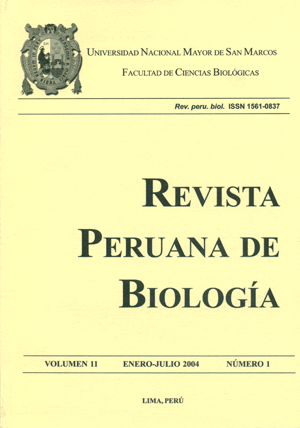Viability and germination of seeds of Puya raimondii Harms (Bromeliaceae)
DOI:
https://doi.org/10.15381/rpb.v11i1.2435Keywords:
Puya raimondii, Bromeliaceae, germination, seed viabilityAbstract
Puya raimondii Harms is an endemic species of the highlands of Peru and Bolivia between 3200 to 4800 m of altitude with noticeable great size and beauty. It is considered threatened species; therefore it is urgent to know the factors that affect its viability and germination of their seeds; aspects focused work presently. The seeds were collected in 1999 and 2000 in Huashta Cruz (Pueblo Libre, Ancash, Peru) and they classified as lots (considering their origin and appearance). They were determined their moisture content and the viability (quality). By means of germination tests, it was evaluated in 5 lots the effect of the light and temperature. The seeds presented different viability which depended on the conditions they were exposed in situ and that it is correlated inversely with its content of humidity, affecting its appearance inclusive. The seeds exposed to the light presented high percentage of germination (positive photoblastics, require light to germinate). Temperatures higher than 21°C had a negative effect in the percentage of germination and germination speed index.Downloads
Downloads
Published
Issue
Section
License
Copyright (c) 2004 Giovana Vadillo, Mery Suni, Asunción Cano

This work is licensed under a Creative Commons Attribution-NonCommercial-ShareAlike 4.0 International License.
AUTHORS RETAIN THEIR RIGHTS:
a. Authors retain their trade mark rights and patent, and also on any process or procedure described in the article.
b. Authors retain their right to share, copy, distribute, perform and publicly communicate their article (eg, to place their article in an institutional repository or publish it in a book), with an acknowledgment of its initial publication in the Revista Peruana de Biologia.
c. Authors retain theirs right to make a subsequent publication of their work, to use the article or any part thereof (eg a compilation of his papers, lecture notes, thesis, or a book), always indicating its initial publication in the Revista Peruana de Biologia (the originator of the work, journal, volume, number and date).






